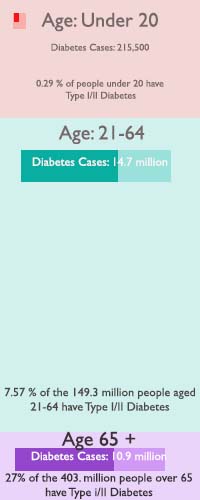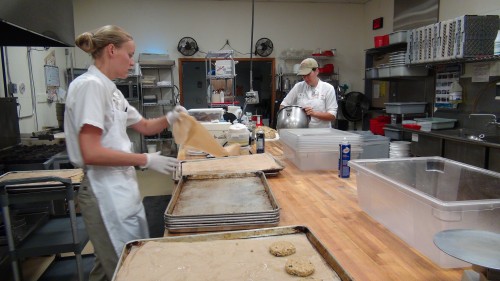Sarah and Brad Jones have a one year old named Brynlee. Brynlee has cystic fibrosis, or “CF,” a disease which renders approximately 30,000 U.S. citizens vulnerable to life-threatening respiratory and digestive issues.

Brynlee Jones has an nasogastric tube attached that runs from her back through her nose, down to her stomach. Her parents hook formula up to the tube at night so that Brynlee can get the nutrition that she needs to feed her body. According to Jones, for patients of cystic fibrosis to have the best long-term quality of life, it is critical that they develop full lung capacity and get maximum nutritional benefit while they are young. (Photo by: Kaley Perkins / Independent Journalist)
In addition to the respiratory treatment in the video above, the family has a protocol to support Brynlee’s digestive health. Born with a blocked intestinal tract, their daughter has struggled to get adequate nutrition from birth. A nasogastric tube or “NG tube” inserted through Brynlee’s nose carries night-time nutrition to her stomach where she is able to receive it without the work normally associated with digestion.
The digestive enzymes which accompany every meal cost $600 per month, and the respiratory treatment costs $2,500 per month.
The Cystic Fibrosis Foundation, the national clearinghouse for information and the primary fund-raising arm of the community affected by cystic fibrosis, follows the development of new treatments. Current focus is on identifying and treating the underlying genetic mutations that cause the disease.
The foundation connects families to local support centers and resources for families struggling to find the finances that purchase the medications that keep their children breathing.

For a person to have Cystic Fibrosis, each parent needs to be a carrier of the gene mutation which creates the disease. If both parents are carriers, the child has a one in four chance of developing the disease. (Created by Kaley Perkins)
For a person to get CF, each parent needs to be a carrier of the mutated gene. Of children born to those parents, one in four will develop the disease, two will be carriers themselves, and one will be unaffected.
But those odds, didn’t hold up in the case of the Jones family who have had two children affected by the disease. Three years ago, the family lost their first-born son, Conner, to the diseaase: Jones says that with Conner, instead of a single tote of medications, they had cupboards full.
Conner was seven.
Conner:
Family friend, Tricia Rodman, is part of the church body that provided critical emotional and practical support to the Jones family as Conner’s disease became more critical. In a phone conversation, Rodman told stories about the family as Conner’s time was getting short.
The family had taken a trip to Hawaii as part of the Make A Wish Foundation. Rodman asked Conner to select his favorite pictures from his trip. “He loved Transformers and Super Grover and so of course we found pictures of those,” reported Rodman. “We traced his hand, and I had him write his name on some transferable paper.”

Orchestrated by family friends, Tricia Rodman, and Sonja Narvesen, this quilt displays Conner’s favorite family photos, his hand prints, and his signature. The central photo was taken during the family’s trip to Hawaii funded by the Make a Wish Foundation. (Photo used by permission from Sarah Jones.)
Conner had wanted a puppy whom he named Grover, in honor of the Sesame Street character. During one of Conner’s last visits to Doernbecher’s hospital, his parents and some family friends launched “Operation Grover,” according to Rodman, where they snuck the puppy up into Conner’s hospital room. Rodman spoke with joint sadness and fondness for the Jones family and the dedicated group that surrounded them in their darkest hours.
Rodman recounts the day when Conner passed away at home. “After Conner had passed, Grover was just beside himself. He could tell that something was wrong. I took Grover into Conner’s room and I laid him on Conner’s chest,” Rodman said. She was moved by how the puppy immediately calmed down and lay still.
“He was protecting his boy,” Rodman said, with a voice broken up by tears.
Mom Sarah is hopeful for Brynlee’s prognosis. She says her two unaffected boys, Hunter and Bradyn, don’t treat their sister differently until she gets sick and they become very concerned. You can read her family’s journey and see more pictures of the Jones children on her blog.
For more information about cystic fibrosis or to donate, visit www.cff.org.
Note: Special thanks to Tricia Rodman for correcting some details that I got wrong in my initial writing of this article. An update on 10/17/2013 reflects this correction of the details “Operation Grover” and the situation surrounding Conner’s passing.










